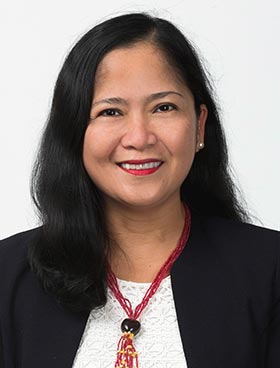
Working in the New Zealand health-care system presents multiple challenges for internationally qualified nurses (IQNs). How they transition into new working environments will affect how well they adapt and whether they continue working in this country.
Approximately three out of 10 or 28.7 per cent of 57,833 practising nurses in New Zealand are IQNs and they are represented in all health-care areas in the country.1 As of March 2019, the main ethnic groups IQNs identified with were Filipino (33 per cent), other European (31 per cent) and Indian (21 per cent). IQNs are younger than most nurses in the workforce, with 48 per cent under the age of 40 (compared to 34 per cent for New Zealand-qualified nurses), while male IQNs comprise 53 per cent of all practising male nurses in New Zealand.2
IQNs are immersed in social, educational, cultural, historical, economic and political influences that all affect the way they transition to their new working environment.3 The benefits of IQN knowledge, skills and work background can be enhanced if they are integrated successfully into these new environments.
The design of transitioning programmes varies throughout the world, though the challenges IQNs face are universal. Six broad categories of transitional challenges have been identified, namely:
- Language and communication, ie getting used to idioms, acronyms and abbreviations. Unfamiliarity with local accents, language nuances and the socio-cultural context make this even harder.4, 5, 9
- Cultural displacement and adjustment: this is about cultural uprooting, the perception of “not belonging” and interpersonal conflicts due to differences in cultural values, norms and expectations.5, 8, 9
- Professional challenges include pre- and post-registration issues and socio-cultural differences in the health-care environment.7 Added to this are differences in nursing practice, including role and expectations, scope of practice, professional autonomy, health-care technology and organisational structure.4, 5, 8, 9
- Marginalisation, discrimination and racism: this is about race, gender and cultural bias, including stereotyping and injustices such as bullying.5, 8, 9
- Physical challenges include separation from family and culture, and adapting to New Zealand’s physical environment and cooler climate.7
- Social challenges focus on socio-cultural differences, relationships and how social networks are used in coping.7
If IQNs are to stay in New Zealand, they must be successfully integrated. Successful integration has been shown to correlate with job satisfaction6 and job satisfaction is closely related to turnover intentions.10
The four adjustment phases identified in literature – acquaintance, indignation, conflict resolution and integration – can be used by organisations to offer various types of support to IQNs. Successful implementation of an integration programme aligned with these phases fosters IQN retention.11
Navigating multiple worlds
IQNs should be viewed, not just as able-bodied workers, but as human beings who are grounded in a socioecological system that influences every aspect of their being. They navigate multiple worlds – the home and the new country, internal struggles and external interactions, the self and interrelationships. This navigation takes place within the context of socioecological influences that affect how they live in a new country and work in a new health-care system. Those who struggle need to be supported and those who simply tread water need to be understood.
Monina Hernandez, MN(Hons), PGDipSc, PGCertTch, BSN, RN, RM, is president of the Filipino Nurses Association of New Zealand and an infection prevention and control clinical nurse specialist at the managed isolation and quarantine facilities, Northern Managed Facilities. She is also a lecturer and doctoral student at Massey University and a member of the Nursing Council. This article is informed by her doctoral work.
References
- Nursing Council of New Zealand. (2019). 2019 Annual report for the year ended 31 March. Wellington: Author.
- Nursing Council of New Zealand. (2020). The New Zealand Nursing Workforce: A profile of Nurse Practitioners, Registered Nurses and Enrolled Nurses 2018-2019. Wellington: Author.
- Hernandez, M. (2019). Filipino nursing leader calls for IQN section. Kai Tiaki Nursing New Zealand, 25(7), 30.
- Adeniran, R. K., Rich, V. L., Gonzalez, E., Peterson, C., Jost, S., & Gabriel, M. (2008). Transitioning Internationally Educated Nurses for Success: A Model Program. Online Journal of Issues in Nursing, 13(2), 12.
- Chege, N., & Garon, M. (2010). Adaptation challenges facing internationally educated nurses. Dimensions of Critical Care Nursing, 29(3), 131-135.
- Ea, E. E. (2008). Facilitating acculturation of foreign-educated nurses. Online Journal of Issues in Nursing, 13(1), 5.
- Jenkins, B., & Huntington, A. (2016). ‘We are the international nurses’: an exploration of internationally qualified nurses’ experiences of transitioning to New Zealand and working in aged care. Nursing Praxis in New Zealand, 32(2), 9-20.
- Newton, S., Pillay, J., & Higginbottom, G. (2010). The migration and transitioning experiences of internationally educated nurses: a global perspective. Journal of Nursing Management, 20(4), 534-550.
- Xu, Y. (2010). Transitioning international nurses: An outlined evidence-based program for acute care settings. Policy, Politics and Nursing Practice, 11(3), 202-213. doi:10.1177/1527154410384879.
- Bozionelos, N. (2009). Expatriation outside the boundaries of the multinational corporation: A study with expatriate nurses in Saudi Arabia. Human Resource Management, 48(1), 111–134.
- Pilette, P. (1989). Recruitment and retention of international nurses aided by recognition of phases of the adjustment process. Journal of Continuing Education in Nursing, 20(6), 277-281.



